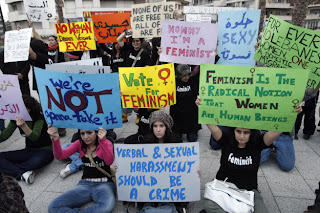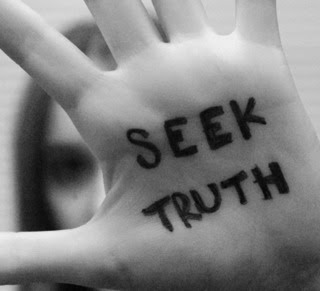
"The only thing we have to fear is fear itself."- FDR
The prominence of fear as a tactic to earn support for political agendas is a familiar one in American history. Throughout history propaganda or manipulation of statistics have been specifically used to bring the majority together in support of intervening in foreign affairs. This type of manipulation of statistics to incite fear in the American public can be seen when the government attempted to rationalize dropping an atomic bomb on Hiroshima and Nagasaki. President Truman and his Secretary of War Henry Stimson released a statistic to the American public that supported the atomic bombings because otherwise “over a million” would die in a Japanese land invasion. That statistic isn’t supported or proven in any way, but two government officials repeating that sentiment scared a large majority of the nation into agreeing with the atomic bombings. Another more recent incident of government propaganda used to incite fear was the Bush administration and the Iraq war. In Episode 10 of the documentary Bush is quoted speaking on Saddam Hussein, saying “we know he’s been developing weapons of mass destruction” (Stone, 2012). Bush’s persistence that Saddam Hussein had WMDs scared the public into supporting what became an eight year long Iraqi war. There were no WMDs ever found.
Below is a clip of Bush speaking on weapons of mass destruction:
"Those who choose to live in denial may eventually be forced to live in fear."- George W. Bush
Truman and Bush had two of the lowest approval ratings when leaving office. Eventually truth came out involving both of their campaigns and the American public turned against them. With Truman photographs and realistic statistics were released concerning Hiroshima and Nagasaki; while Bush’s “weapons of mass destruction” ploy was uncovered as unsupported and fabricated. Fear can only control the American public for so long before the truth comes out, the fear subsides and rationality re-emerges.
The American public’s rationality also seemed to have disappeared when there was a widespread panic surrounding the release and public showing of the porno film Deep Throat. As mentioned in the documentary Inside Deep Throat, in 1972 when the film was released for its first showing in Times Square, many did not even know what the sexual act was, or denied and condemned it. It was so unconventional and controversial to even speak about such an act, much less produce it on film. Americans were still trying to portray traditional norms of privacy and secrecy surrounding sexuality, but Deep Throat pushed the sexual revolution to the forefront in a way that could not be ignored. Many speculate that the sexual revolution itself was a product of fear, equating the sexual revolution and fatalism; though that will not be discussed here, I am sure that the widespread opposition to it was spun from fear of breaking away from the façade Americans had held of “normalcy”. Speaking to the smoking mirror of American prudence; a quote from Deep Throat, “when you have a nation that totally lies than there is no reality”. Extremists even tried to illicit fear in the public by claiming that “there is a relationship between violence and porn”—once again a claim totally unsupported, but some people will say anything to have you support their agenda.

Protestors demonstrating against a showing of the film Deep Throat.
Another example of widespread fear of abandoning the American “normalcy” instilled within us is the reaction to homosexuals. The Lavender Scare, which is equated to McCarthyism, took place in the 1950s and made a cause for arrest and prosecution of those even suspected to be homosexuals. Again, two men didn’t fit into the nuclear American family, so they were persecuted and marginalized—forced to repress their identity because it was incompatible with the American norm. This continues to be seen later in the semester with the death of Harvey Milk, the first openly gay politician, in 1978.
Although pornography is now more widely accepted, homosexuals are still largely subject to discrimination—and a lot of times the reasoning behind that is it is not “normal” or “traditional” in the views of many Americans. We need to separate from our fear of abandoning this established normalcy we cling so tightly to for a false sense of comfort. Every American needs his or her regular dose of fear to maintain the illusion that he or she is incapable of taking care of him/herself. Those who submit to fear and blindly support government agendas are the status quo. Only can we hope, that one day rationality will finally trump fear—but at this point it is so essential to the maintenance of our governmental system that I wonder; would it survive?











